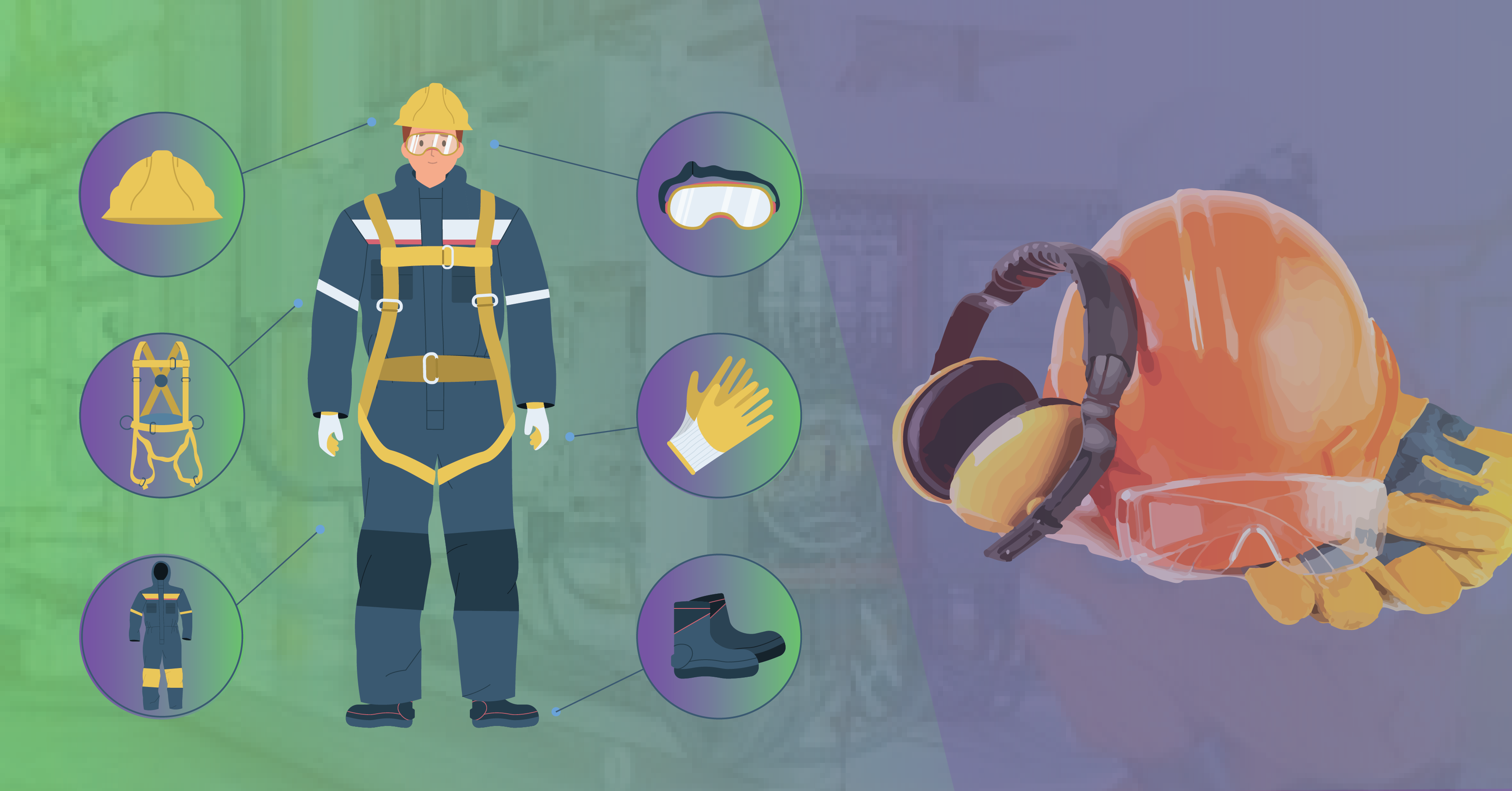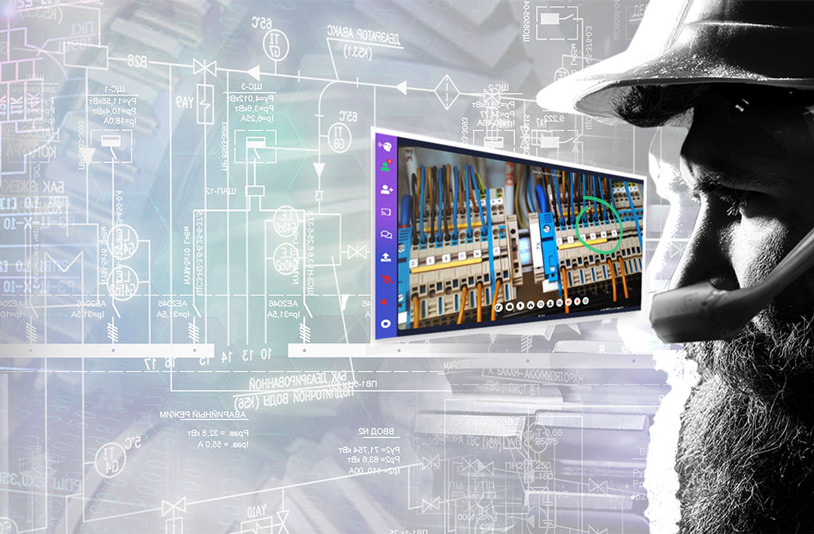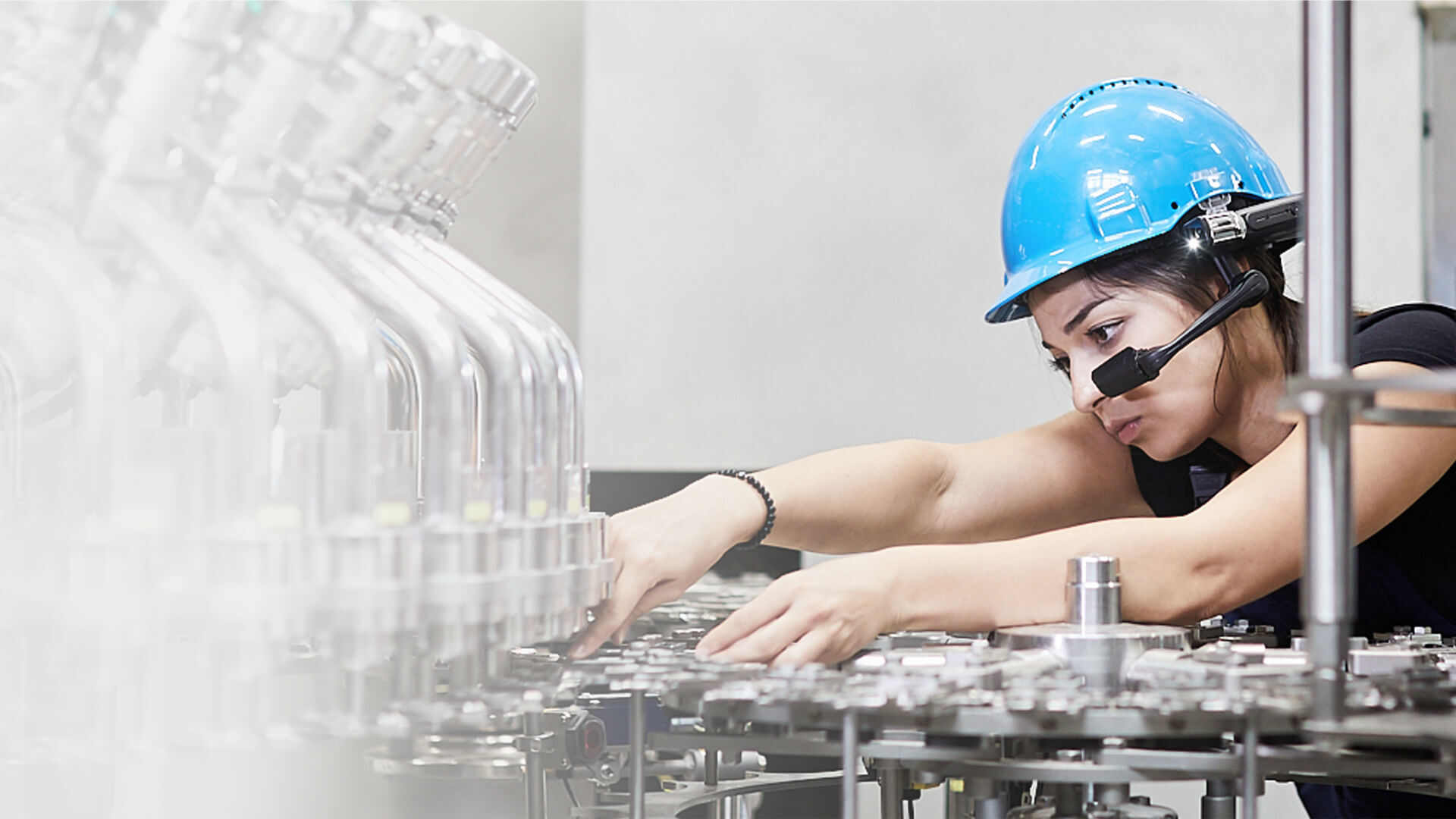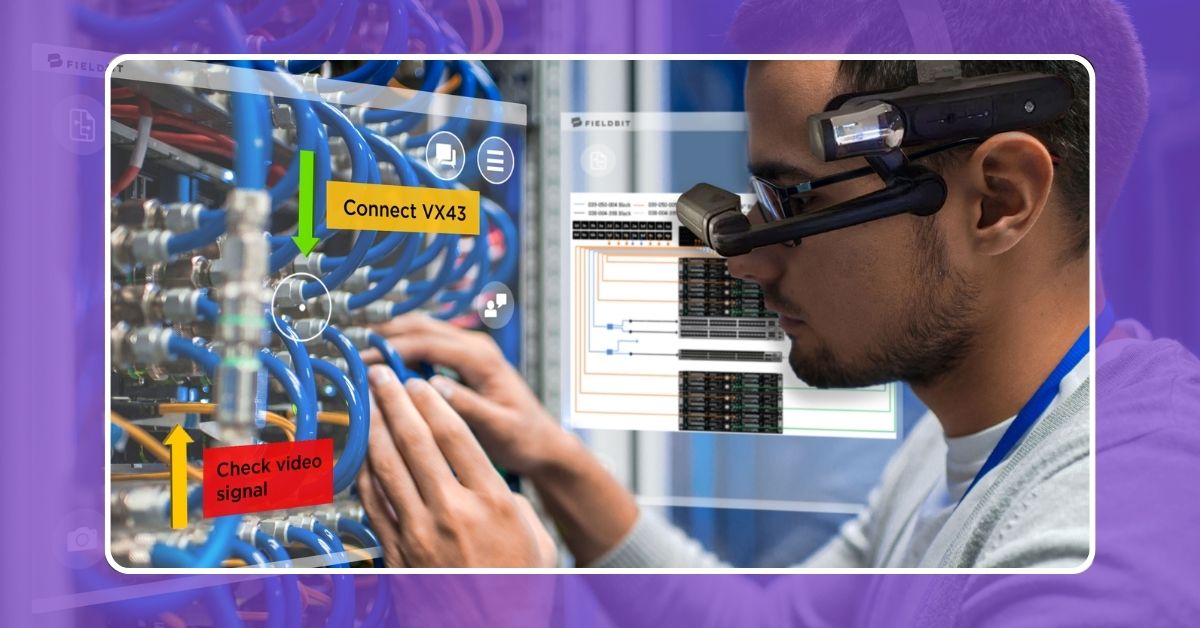The Evolution of Workplace Safety:
In the not-so-distant past, workplace safety primarily relied on traditional methods and human vigilance. While Personal Protective Equipment has been a longstanding feature of workplace safety, the advent of technology has taken it to a whole new level.
While government and regulatory bodies mandate PPE compliance, employers often fall short of ensuring 100% safety. In these instances, AI-based smart solutions can assist employers in observing and checking field workers before entering the field, thereby reducing risks and ensuring compliance with policies.
Shocking Statistics
Failure to wear PPE can result in severe injury or death. In the 2015-16 period, there were 144 workplace fatalities and approximately 621,000 non-fatal injuries (source: worknest.com). PPE items such as hard hats, goggles, gloves, boots, and many more, play a vital role in managing health and safety risks. However, historical data indicates that many workers who suffered injuries were not wearing PPE or not wearing it the way it’s supposed to be worn.
Health and Safety Executive figures show around 9,000 PPE-related incidents occur each year. Unfortunately, historical records demonstrate that the PPE provided by employers is often not worn.
Understanding PPE Types
PPE is the first line of defense against workplace hazards. From helmets and safety glasses to gloves and high-visibility vests, these gears play a vital role in ensuring the well-being of workers. They act as a shield, protecting us from physical harm and creating a safer environment.
Personal Protective Equipment (PPE) is gear designed to protect users against health or safety risks at work. The overall goal is to provide complete safety to human on the field. Here are some of the commonly used PPE listed below:
• Head Protection
• Eye Protection
• Hearing Protection
• Foot Protection
• Body Protection
• Hands & Arm protection
A number of sites require a five-point PPE uniform, which must be worn at all times to comply with safety requirements. The five points include:
1. Hard hat (with a chin strap when working at heights or in windy conditions)
2. High visibility vest
3. Steel toe-capped boots
4. Gloves
5. Safety goggles
PPE Compliance: Crucial for Every Employer
The Health and Safety Executive states that failure to use provided protective clothing costs around £65 million, with underlying causes including little or no supervision, lack of procedure, poor awareness or risk perception, and human error or misjudgment. While workers may sometimes refuse to wear PPE for religious or health reasons, most refusals stem from poor management, communication, and training.
Employers must ensure workers are aware of the dangers of not using PPE and provide education to foster understanding and compliance. Good communication, effective consultation, better training, and reasonable adjustments can often address objections, as workers may complain that PPE “gets in the way,” but this sentiment can be overcome with well-fitting, comfortable, high-quality equipment that does not hinder their movement or vision.
AI-Enabled Smart Operations: Telepresenz
The Health and Safety Executive states that failure to use provided protective clothing costs around £65 million, with underlying causes including little or no supervision, lack of procedure, poor awareness or risk perception, and human error or misjudgment. While workers may sometimes refuse to wear PPE for religious or health reasons, most refusals stem from poor management, communication, and training.
Employers must ensure workers are aware of the dangers of not using PPE and provide education to foster understanding and compliance. Good communication, effective consultation, better training, and reasonable adjustments can often address objections, as workers may complain that PPE “gets in the way,” but this sentiment can be overcome with well-fitting, comfortable, high-quality equipment that does not hinder their movement or vision.
AI-Enabled Smart Operations: Telepresenz
In the era of technological advancement, AI-based solutions are making significant strides in enhancing safety protocols. Telepresenz, a cutting-edge platform, exemplifies how AI can be employed for real-time monitoring of PPE compliance.
Further, imagine combining the power of PPE with Artificial Intelligence (AI). AI has the potential to transform the way we approach safety in the workplace. It’s not just about wearing protective gear; it’s about making our workplaces smarter and more responsive to potential risks.
The Synergy of PPE and AI:
The combination of Personal Protective Equipment and AI-based smart operations creates a powerful synergy. PPE forms the physical barrier, while AI adds an intelligent layer of protection, making our workplaces not only safer but smarter.
Benefits of the Integration:
• Reduced Accidents: The real-time monitoring and predictive capabilities of AI significantly reduce the chances of accidents, creating a safer working environment.
• Increased Productivity: With the assurance of safety provided by AI, workers can focus on their tasks without constant worry, leading to increased productivity.
• Cost Savings: Preventing accidents not only saves lives but also saves companies from the financial burden associated with workplace injuries.
AI-Based PPE Scanning
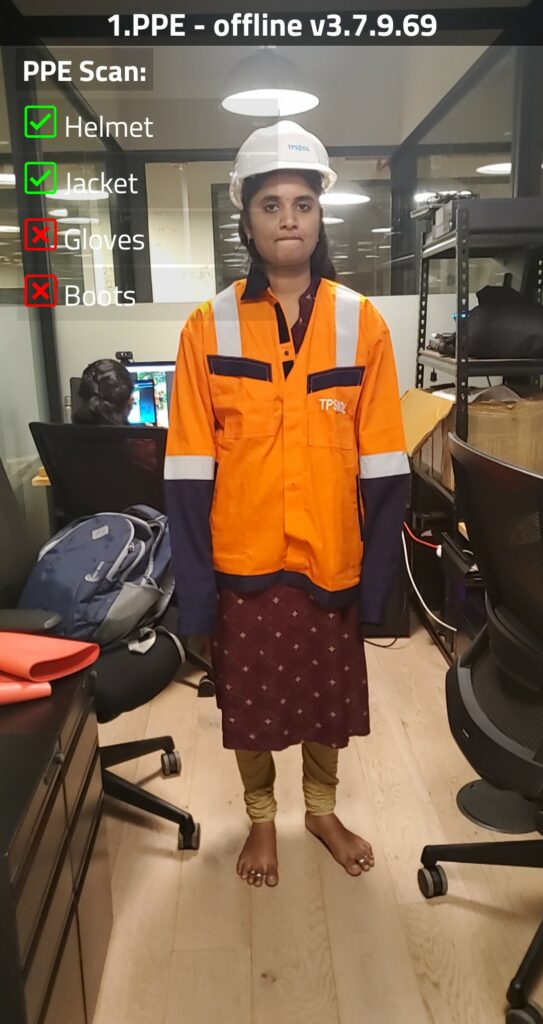
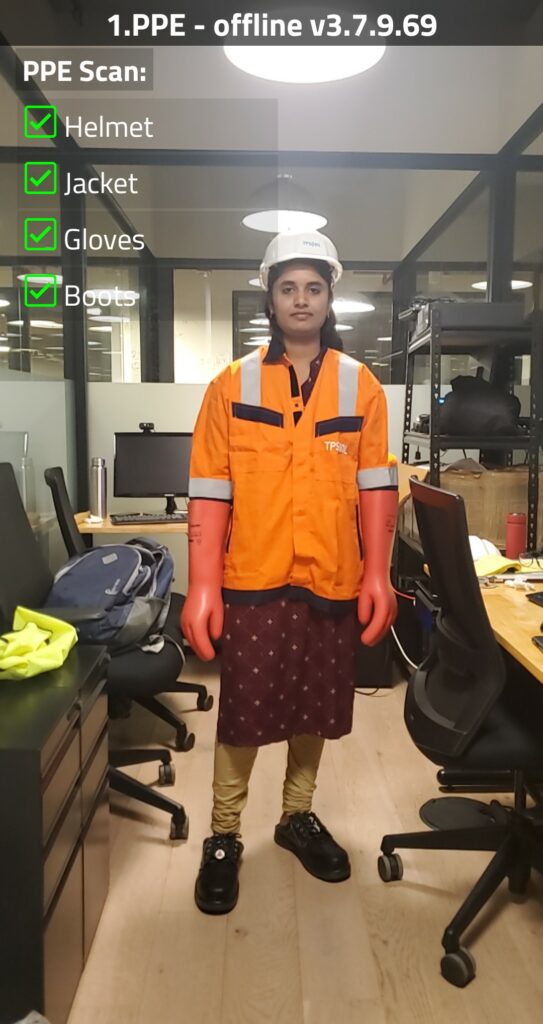
Before field workers embark on their daily tasks, Telepresenz employs a scanning-based solution to verify the presence and proper utilization of essential PPE. The software provides instant feedback, displaying a green checkbox for each correctly worn piece of equipment and a red checkbox for any discrepancies. This fail-safe mechanism ensures that no details is overlooked, creating a robust system to guarantee worker safety in the field. The software then displays the status of each piece of equipment as a green checkbox, confirming their presence and proper utilization.
If any piece of equipment is absent or not worn correctly, the Telepresenz software promptly indicates this with a red checkbox. This instant feedback ensures that no detail is overlooked, providing a fail-safe mechanism to guarantee the worker’s safety in the field.
Conclusion: Safety First
In the utilities industry, where the safety of field workers is of paramount importance, the combination of PPE kits and cutting-edge technologies like Telepresenz is a game-changer. PPE kits serve as the frontline defence against occupational hazards, while Telepresenz ensures that no detail is overlooked, providing an additional layer of safety through smart, automated operations. By embracing these tools, the utilities industry not only meets regulatory requirements but also fosters a culture of safety, ultimately safeguarding the well-being of its workforce and ensuring the smooth and secure operation of essential services.
Stay safe and stay tuned for more insights into the dynamic intersection of technology and safety!
